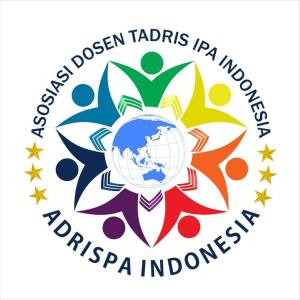SCIENCE LEARNING DISCOURSE BASED ON CLASSROOM REPRESENTATION PRACTICE TO PROCESS CONCEPT OF MATERIAL PRESSURE
DOI:
https://doi.org/10.21154/insecta.v3i2.5124Keywords:
Science Learning, Representation, CommunicationAbstract
Science learning should involve the use of active representation as a medium of communication between teachers and students. This is because representation becomes a medium of communication in the processing of science concepts provided by teachers, and the abilities produced by students themselves during science learning. This study aims to explain class discourse in science learning at SMPN 1 Jetis, based on the focus of discussing the relationship between knowledge representation, and communication patterns. The instruments in this study are questionnaires, and representation ability tests. The data obtained is tabulated in Microsoft Excel, then it is analyzed descriptively. The results showed that science learning at SMPN 1 Jetis was mediated with three types of existing representations, namely active, iconic, and symbolic alternately and simultaneously. The representation ability of students of SMPN 1 Jetis during the learning of the concept of material pressure, reached a score of 81.25 in the category of excellent representation ability; and 2) the shift of the three patterns of combination of representations that exist in science learning at SMPN 1 Jetis directs learning to dialogical, and authoritative communication patterns.References
Arianto, H., & Fauziyah, H. N. (2020). Students’ Response To the Implementation of Case Based Learning (Cbl) Based Hots in Junior High School. INSECTA: Integrative Science Education and Teaching Activity Journal, 1(1), 45. https://doi.org/10.21154/insecta.v1i1.2058
Buty, C., & Mortimer, E. F. (2008). Dialogic/authoritative discourse and modelling in a high school teaching sequence on optics. International Journal of Science Education, 30(12), 1635”“1660. https://doi.org/10.1080/09500690701466280
Eilam, B., & Poyas, Y. (2010). External visual representations in science learning: The case of relations among system components. International Journal of Science Education, 32(17), 2335”“2366. https://doi.org/10.1080/09500690903503096
Evagorou, M., Erduran, S., & Mäntylä, T. (2015). The role of visual representations in scientific practices: from conceptual understanding and knowledge generation to ”˜seeing’ how science works. International Journal of STEM Education, 2(1), 1”“13. https://doi.org/10.1186/s40594-015-0024-x
Hamidah, U. N., & Mubarak, F. A. M. (2020). Integrative Science Education and Teaching Activity Journal. 1(1), 1”“16.
Hilton, A., & Nichols, K. (2011). Representational Classroom Practices that Contribute to Students’ Conceptual and Representational Understanding of Chemical Bonding. International Journal of Science Education, 33(16), 2215”“2246. https://doi.org/10.1080/09500693.2010.543438
Kubasko, D., Jones, M. G., Tretter, T., & Andre, T. (2008). Is it live or is it memorex? Students’ synchronous and asynchronous communication with scientists. International Journal of Science Education, 30(4), 495”“514. https://doi.org/10.1080/09500690701217220
Lehesvuori, S., Hähkiöniemi, M., Viiri, J., Nieminen, P., Jokiranta, K., & Hiltunen, J. (2019). Teacher orchestration of classroom interaction in science: exploring dialogic and authoritative passages in whole-class discussions. International Journal of Science Education, 41(17), 2557”“2578. https://doi.org/10.1080/09500693.2019.1689586
Nurachman, D. E., & Irawan, E. (2020). Effectiveness of Blended Learning Based on Constructive Feedback in Improving Rational Thinking Ability of Students. INSECTA: Integrative Science Education and Teaching Activity Journal, 1(1), 34. https://doi.org/10.21154/insecta.v1i1.2055
Olander, C., Wickman, P. O., Tytler, R., & Ingerman, Ã…. (2018). Representations as mediation between purposes as junior secondary science students learn about the human body. International Journal of Science Education, 40(2), 204”“226. https://doi.org/10.1080/09500693.2017.1407464
Prain, V., & Tytler, R. (2012). Learning Through Constructing Representations in Science: A framework of representational construction affordances. International Journal of Science Education, 34(17), 2751”“2773. https://doi.org/10.1080/09500693.2011.626462
Sugiyono. (2018). Metode Peneiltian Kuantitatif, Kualitatif dan R&D. In Alfabeta Bandung.
Tang, K. S. (2016). The interplay of representations and patterns of classroom discourse in science teaching sequences. International Journal of Science Education, 38(13), 2069”“








